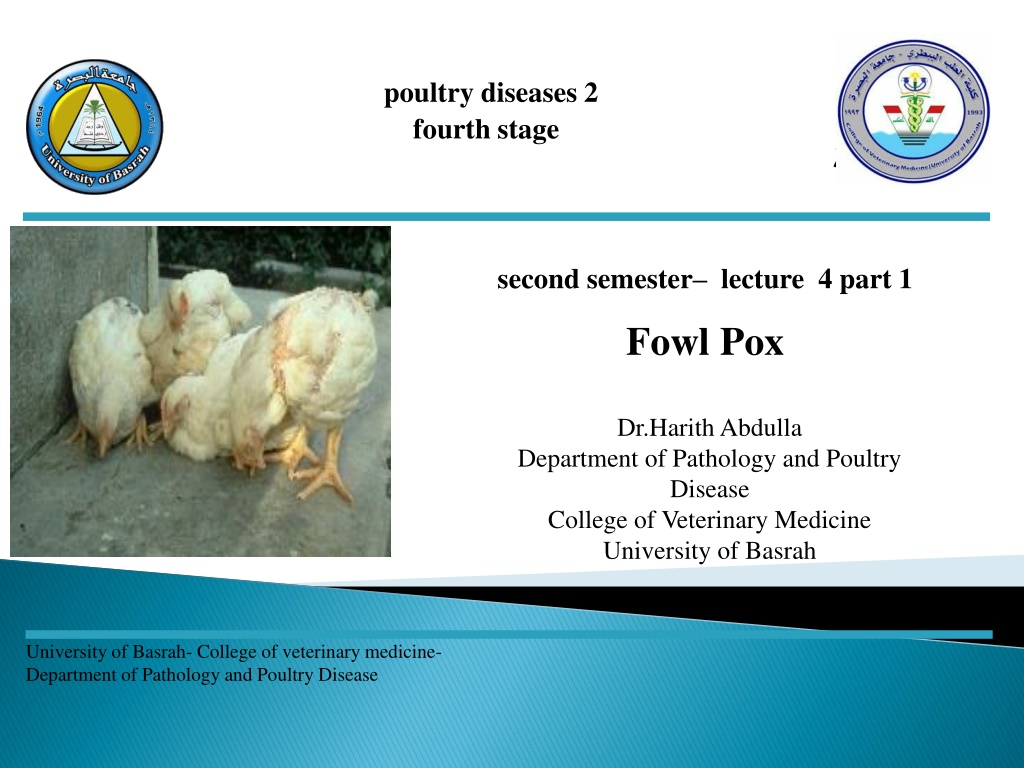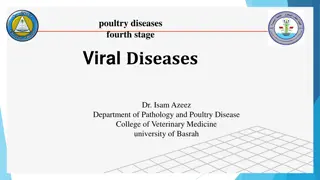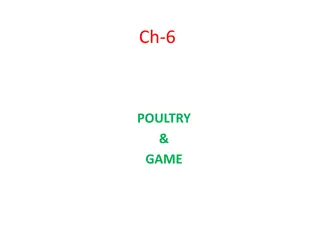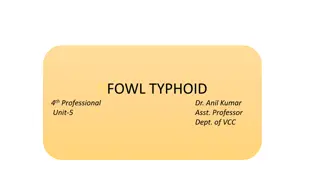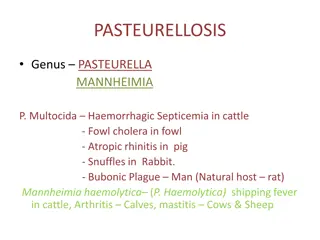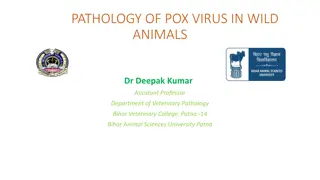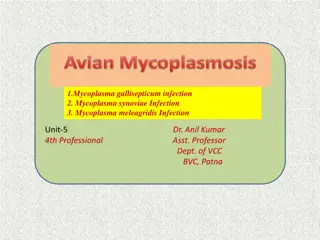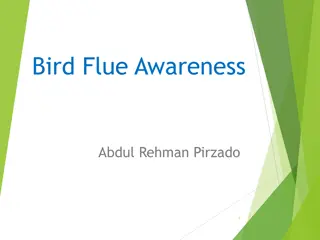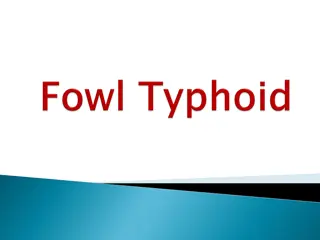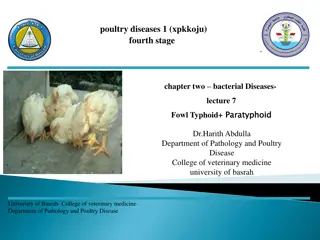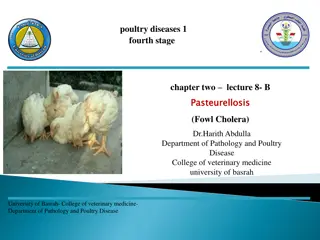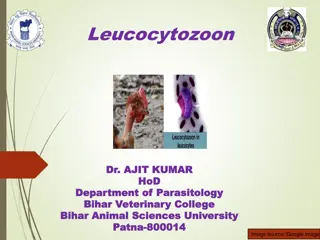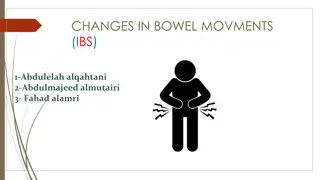Understanding Fowl Pox in Avian Species: Causes, Symptoms, and Diagnosis
Fowl Pox, caused by Avipoxvirus, is a contagious disease in birds characterized by wart-like nodules and diphtheritic membranes in the throat and mouth. It has multiple forms, including dry pox, wet pox, and coryza-like form, with varying clinical signs. The disease spreads through mosquitoes, biting insects, and direct contact. Differential diagnosis includes vitamin A deficiency, infectious coryza, and mycoplasmosis. Post-mortem lesions mirror the clinical signs, aiding in diagnosis.
Download Presentation

Please find below an Image/Link to download the presentation.
The content on the website is provided AS IS for your information and personal use only. It may not be sold, licensed, or shared on other websites without obtaining consent from the author. Download presentation by click this link. If you encounter any issues during the download, it is possible that the publisher has removed the file from their server.
E N D
Presentation Transcript
poultry diseases 2 fourth stage second semester lecture 4 part 1 Fowl Pox Dr.HarithAbdulla Department of Pathology and Poultry Disease College of Veterinary Medicine University of Basrah University of Basrah- College of veterinary medicine- Department of Pathology and Poultry Disease
O Fowl POX ( Avian POX Fowl POX ( Avian POX ) ) An infectious disease of avian species ,characterized by wart-like nodules on the skin and diphtheritic membranes in mouth, larynx , esophagus and trachea. The disease may occur in any age . O Incubation period Incubation period : :( 6-14 )days . O Course of the disease Course of the disease : :( 3- 4 ) weeks. O Mortality Mortality : About 1-2% .
Virus: Virus: Belongs to the Avipoxvirus ,family Poxviridae . Types of virus Types of virus: 1. Fowl poxvirus ( chicken poxvirus ) . 2. Turkey poxvirus. Canary poxvirus Quail poxvirus. 5. Pigeon poxvirus. There is some cross species infectivity with the various viruses with the exception of canary poxvirus which specific for canaries. Etiology: 3. 4.
Method of spread 1. Mechanical transmission by: a. Mosquitoes. b. Biting insects . 2. By contact through abrasions. 3. Aerosol.
Clinical signs: There are three forms of the disease :. 1- Skin form Skin form : Dry pox ( Cutaneous form ): Shows wart- like lesions on the comb, wattles, eyelids and other unfeathered parts of the body .It starts as whitish foci which develops into nodules,then sloughed and scab appear before final healing . 2-Diphtheritic type Diphtheritic type: Wet pox .Yellow patches on the surface epithelium of mouth , larynx ,trachea and esophagus. Removing of these lesions left eroded or ulcerated area. 3-Coryza Coryza like form like form : Infection of the nasal chambers accompanied by Coryza-like signs
OPost mortem lesions Post mortem lesions: Same as signs
Differential diagnosis 1. Vitamin A deficiency. 2. Infectious Coryza. 3. Infectious Bronchitis. 4. Infectious Laryngotracheitis. 5. Mycoplasmosis. 6. Newcastle Disease ( Respiratory form) 7. Aspergillosis 8. Airsacculitis. 9. Avian Influenza ( Respiratory signs ) 10. Trichomoniasis. 11. Physical damage.
Diagnosis: 1. Typical lesions . 2. Histopathology : Intra-cytoplasmic inclusions with ballooning degeneration. 3. Viral isolation. 4. Experimental infection.
Treatment: No treatment. Removal of scabs around the eyes or mouth will facilitate eating or drinking. Prevention: Prevention: 1. Vaccination. A A- -Fowl poxvirus vaccine : More virulent. B B- - Pigeon poxvirus vaccine : Less virulent 2. Both vaccines are given via the wing-web .
